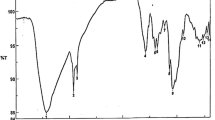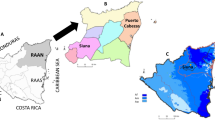Abstract
THE organisms used in this investigation were Ascaris lumbricoides, from the small intestine of the pig, and Moniezia expansa, from the small intestine of the sheep. They were brought to the laboratory in host gut contents contained in vacuum flasks and were fixed within two hours of the time of their removal from the host. The histological distribution of alkaline phosphatase was determined by the method of Gomori1, using sodium glycerophosphate as a substrate.
This is a preview of subscription content, access via your institution
Access options
Subscribe to this journal
Receive 51 print issues and online access
$199.00 per year
only $3.90 per issue
Buy this article
- Purchase on Springer Link
- Instant access to full article PDF
Prices may be subject to local taxes which are calculated during checkout
Similar content being viewed by others
References
Proc. Soc. Exp. Biol. Med., 42, 23 (1939).
Amer. J. Hyg., 37, 121 (1943).
Rogers, unpublished work.
Biochem. Z., 264, 209 (1933).
Biochem. Z., 276, 17 (1935).
Author information
Authors and Affiliations
Rights and permissions
About this article
Cite this article
ROGERS, W. Histological Distribution of Alkaline Phosphatase in Helminth Parasites. Nature 159, 374–375 (1947). https://doi.org/10.1038/159374b0
Issue Date:
DOI: https://doi.org/10.1038/159374b0
This article is cited by
-
Hymenolepis diminuta (order cyclophyllidea): Histochemical localization of glycogen, neutral lipid, and alkaline phosphatase in developing worms
Zeitschrift f�r Parasitenkunde (1971)
-
Histochemical Studies on the Rediae and Cercariae of Echinoparyphium recurvatum Linstow
Nature (1966)
-
Phosphatases in Schistosoma Mansoni
Nature (1961)
Comments
By submitting a comment you agree to abide by our Terms and Community Guidelines. If you find something abusive or that does not comply with our terms or guidelines please flag it as inappropriate.



